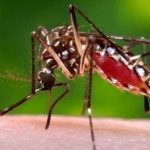
Q Fever
Q fever can cause acute or chronic illness in humans, who usually acquire the infection after contact with infected animals or exposure to contaminated environments. The acute symptoms caused by infection with Coxiella burnetii usually develop within 2-3 weeks of exposure, although as many as half of humans infected with C.burnetii do not show symptoms.
Symptoms
The following is a list of symptoms commonly seen with acute Q fever. However, it is important to note that the combination of symptoms varies greatly from person to person.
high fevers (up to 104-105°F)
severe headache
general malaise
myalgia
chills and/or sweats
non-productive cough
nausea
vomiting
diarrhoea
abdominal pain
chest pain
Diagnosis
There are several aspects of Q fever that make it challenging for healthcare providers to diagnose and treat. The symptoms vary from patient to patient and can be difficult to distinguish from other diseases. Treatment is more likely to be effective if started in the first three days of symptoms. Diagnostic tests based on the detection of antibodies will frequently appear negative in the first 7-10 days of illness. For this reason, healthcare providers must use their judgment to treat patients based on clinical suspicion alone. Healthcare providers may find important information in the patient’s history and physical examination that may aid clinical diagnosis. Information such as recent travel to rural or agricultural communities where infected livestock may be present, or employment in high risk occupations such as veterinarians or farmers can be helpful in making the diagnosis. Chronic Q fever is a risk for anyone with a history of acute Q fever illness, particularly those persons with valvular disease, blood vessel abnormalities, immunosuppressed persons, and women who were pregnant when they became infected.
The healthcare provider should also look at routine blood tests, such as a complete blood cell count or a chemistry panel. Clues such as a prolonged fever with low platelet count, normal leukocyte count, and elevated liver enzymes are suggestive of acute Q fever infection, but may not be present in all patients. After a suspect diagnosis is made based on clinical suspicion and treatment has begun, specialized laboratory testing should be used to confirm the diagnosis of Q fever.
Suspect diagnosis of Q fever is made based on signs and symptoms and a high index of clinical suspicion. Diagnosis can later be confirmed using specialized confirmatory laboratory tests.
Treatment
Doxycycline is the first-line treatment for all adults, and for children with severe illness. Treatment should be initiated immediately whenever Q fever is suspected.
Use of antibiotics other than doxycycline or other tetracyclines is associated with a higher risk of severe illness. Doxycycline is most effective at preventing severe complications from developing if it is started early in the course of the disease. Therefore, treatment must be based on clinical suspicion alone and should always begin before laboratory results return.
If the patient is treated within the first 3 days of the disease, fever generally subsides within 72 hours. In fact, failure to respond to doxycycline suggests that the patient’s condition might not be due to Q fever. Severely ill patients may require longer periods before their fever resolves. Resistance to doxycycline has not been documented.
There is no role for prophylactic antimicrobial agents in preventing Q fever after a known exposure and prior to symptom onset; attempts at prophylaxis will likely extend the incubation period by several days but will not prevent infection from occurring.
Recommended Dosage for Acute Q fever
Doxycycline is the first-line treatment for children with severe illness of all ages and adults:
Adults: 100 mg every 12 hours
Children under 45 kg (100 lbs): 2.2 mg/kg body weight given twice a day
Patients should be treated for at least 3 days after the fever subsides and until there is evidence of clinical improvement. The standard duration of treatment is 2-3 weeks.
Recommended Dosage for Chronic Q fever
Adults: Doxycycline 100 mg every 12 hours and hydroxychloroquine 200 mg every 8 hours.
The standard duration of treatment is 18 months.
Treating children
The use of doxycycline is recommended to treat Q fever in children of all ages who are hospitalized or are severely ill. Unlike older generations of tetracyclines, doxycycline has not been shown to cause staining of permanent teeth, and most experts consider the benefit of doxycycline in treating Q fever in children younger than 8 years of age with severe illness or who are hospitalized greater than the potential risk of dental staining. Children with mild illness who are less than 8 years of age may be treated with co-trimoxazole, but therapy should be switched to doxycycline if their course of illness worsens.
Treatment should never be delayed pending the receipt of laboratory test results, or be withheld on the basis of an initial negative laboratory result.
Reference:Health.mo.gov






